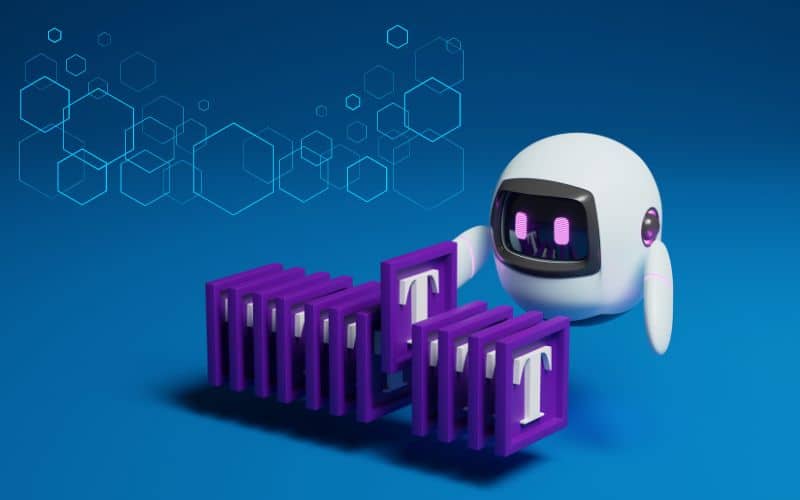Have you ever wondered how computers can create things like art, music, or stories? How do they know what to make, and who helps them do it? The answer lies in something called the Generative AI ecosystem. It’s a big team of people, machines, and tools working together to teach computers to be creative, just like humans!
Generative AI is a special kind of technology that can create new content by learning from examples. There are different types, like AI that writes stories or paints pictures.
In this blog, we’ll explore what the generative AI ecosystem is, who’s involved, and how it all works together!
What is a Generative AI Ecosystem?

The term Generative AI ecosystem refers to the whole network of tools, people, technologies, and processes that work together to create, develop, and use generative AI. It’s like a big, interconnected web where every part plays an important role.
The Building Blocks of Generative AI
Before we talk about the ecosystem, let’s first understand the basics of generative AI.
Generative AI is a type of artificial intelligence that can generate new content, like writing a story, painting a picture, or composing a song, by learning from lots of examples. It’s like teaching a machine how to be creative!
Key Players in the Generative AI Ecosystem
Just like how a movie needs actors, directors, and crew members to come together and make it successful, the generative AI ecosystem has key players who make everything work smoothly. These players are the people, companies, and technologies that contribute to the development and use of generative AI.
1. Researchers and Scientists
These are the people who create the brains behind generative AI. They study how machines learn and think, and they come up with new ways for AI to create amazing things. Without their hard work, we wouldn’t have generative AI at all!
2. Developers and Engineers
Developers and engineers are the ones who build the software and tools that make generative AI work. They write the code and design the programs that allow AI to learn and create. They are like the builders who turn the scientists’ ideas into reality.
3. Companies and Organizations
Big and small companies are part of this ecosystem too. They invest money and resources to develop generative AI technologies. These companies might use AI to create new products, improve their services, or even help solve big problems like finding new medicines or reducing pollution.
4. Government and Policymakers
Governments play an important role in the ecosystem by creating rules and guidelines to ensure that AI is used safely and fairly. They help protect people’s rights and make sure that AI benefits everyone.
5. Educators and Trainers
To use generative AI, people need to learn how it works. Educators and trainers teach students and professionals about AI, helping to spread knowledge and skills. They make sure that more and more people can contribute to and benefit from the generative AI ecosystem.
This Ecosystem Encompasses Several Key Components
The generative AI ecosystem isn’t just about the people involved; it also includes important components that help everything work together. Let’s look at some of these key parts.
1. Data
Data is like the fuel that powers generative AI. To create new content, AI needs to learn from lots of examples, and these examples come from data. This data can be anything from images and sounds to text and numbers. The more data AI has, the better it can learn and create.
2. Algorithms
Algorithms are the step-by-step instructions that tell the AI what to do with the data. They help the AI learn patterns, make decisions, and create new content. Think of algorithms as the recipe that the AI follows to bake a cake, but instead of a cake, it’s creating art, music, or stories.
3. Computing Power
For AI to process all that data and follow its algorithms, it needs a lot of computing power. This is where super-fast computers and powerful machines come in. They help AI work quickly and efficiently, making sure it can create amazing things in a short amount of time.
4. Ethical Guidelines
As powerful as generative AI is, it’s important to use it responsibly. Ethical guidelines are like the rules of a game; they make sure that everyone plays fair and that AI is used in ways that are good for society. These guidelines help prevent misuse and ensure that AI is developed and used in a way that respects people’s rights and values.
5. Collaboration and Community
No one can build and use generative AI alone. Collaboration and community are essential parts of the ecosystem. Researchers, developers, companies, and governments all work together, sharing ideas, resources, and knowledge. This teamwork helps to push the boundaries of what generative AI can do and makes sure that its benefits are shared widely.
The Future of the Generative AI Ecosystem
The generative AI ecosystem is constantly growing and evolving. As more people learn about AI and more companies invest in its development, the ecosystem will continue to expand. New technologies, like even smarter algorithms and more powerful computers, will make generative AI even more creative and useful.
In the future, we might see generative AI being used in ways we can’t even imagine today. It could help solve some of the world’s biggest challenges, like climate change, by coming up with innovative solutions. Or it could make our lives more fun and creative by helping us make art, music, and stories that we’ve never dreamed of before.
Conclusion
The generative AI ecosystem is an amazing network of people, technologies, and processes that work together to create and use artificial intelligence in creative ways. From researchers and developers to companies and governments, everyone has a role to play. And with the help of data, algorithms, computing power, ethical guidelines, and collaboration, this ecosystem is set to make a big impact on our world.
As you grow up and learn more about technology, you might even become a part of this ecosystem, contributing your ideas and creativity to the future of generative AI!



